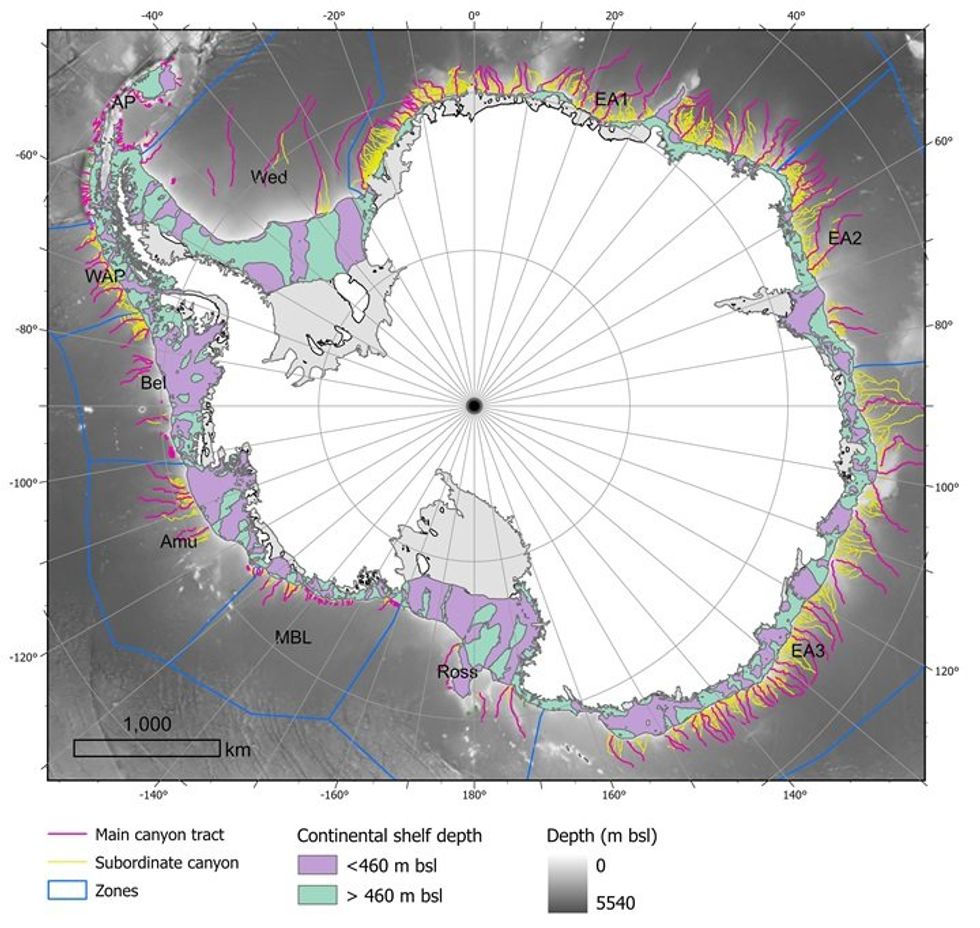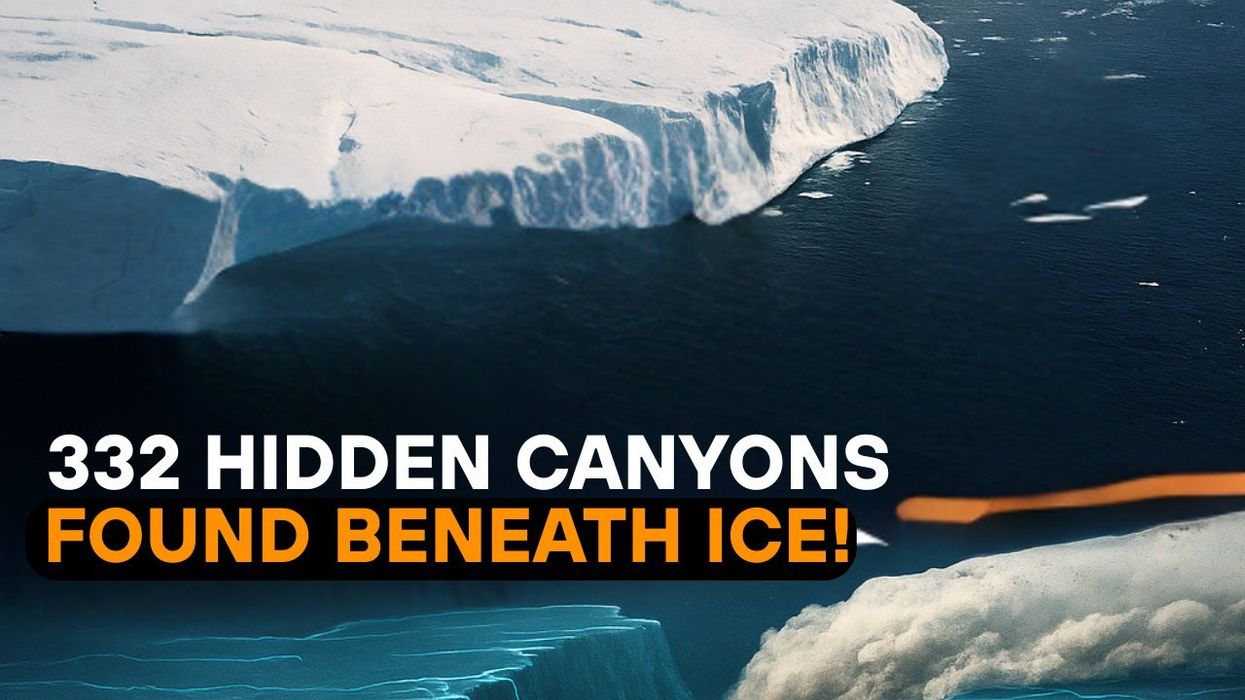Sinead Butler
Oct 20, 2025
Scientists Just Found 332 Giant Trenches Under Antarctica
WooGlobe - News / VideoElephant
A whopping 300 water canyons have been discovered by researchers across Antarctica - some reaching the depths of 4,000 meters (13,123 feet).
All thanks to new high-resolution bathymetric data, scientists from University College Cork in Ireland and the University of Barcelona in Spain were able to locate the concealed canyons, and their findings have been published in the Marine Geology journal.
What the experts say
“Some of the submarine canyons we analysed reach depths of over 4,000 metres,” said David Amblàs, of the Consolidated Research Group on Marine Geosciences at the UB's Faculty of Earth Sciences.
“The most spectacular of these are in East Antarctica, which is characterized by complex, branching canyon systems. The systems often begin with multiple canyon heads near the edge of the continental shelf and converge into a single main channel that descends into the deep ocean, crossing the sharp, steep gradients of the continental slope.”

“Thanks to the high resolution of the new bathymetric database — 500 metres per pixel compared to the 1–2 kilometres per pixel of previous maps — we could apply semi-automated techniques more reliably to identify, profile and analyse submarine canyons," said Riccardo Arosio, of the Marine Geosciences Research Group at University College Cork.
The researchers also developed GIS software script that allows them "to calculate a wide range of canyon-specific morphometric parameters in just a few clicks”.
What do these canyons look like?
Not all the canyons are the same depending on their location on the continent.
The canyons in the east are described as having "a more complex and branched, often forming extensive canyon–channel systems with typical U-shaped cross section," then in contrast, the ones in the west are "shorter and steeper, characterized by V-shaped cross sections.”
Therefore, researchers believe the East Antarctica Ice Sheet is older than the west as it "has experienced a more prolonged development".
"This had been suggested by sedimentary record studies,” Amblàs noted. “but it hadn’t yet been described in large-scale seafloor geomorphology.”
Why this research is important
We know Antarctica to be a chilly place, and while ice is clear to see above the surface, below there is rock where canyons and mountain peaks can be found, reminiscent of the contents we live on.
This kind of research into underwater canyons is important since they contribute to ocean circulation, and move sediments and nutrients along, and "connect shallow and deep waters and they create habitats rich in biodiversity."
Currently, over 10,000 submarine canyons have been identified by scientists globally, but it is thought this figure could be much higher as only 27 per cent of the Earth’s seafloor has been mapped out in high quality. Therefore, all the more submarine canyons for experts to explore.
“That’s why we must continue to gather high-resolution bathymetric data in unmapped areas that will surely reveal new canyons, collect observational data both in situ and via remote sensors and keep improving our climate models to better represent these processes and increase the reliability of projections on climate change impacts," the pair concluded.
Elsewhere, Scientists have discovered a new 'Antarctica' accent, and Strange structures found lurking beneath Antarctic ice.
This article was first published on August 15, 2025.
How to join the indy100's free WhatsApp channel
Sign up to our free indy100 weekly newsletter
Have your say in our news democracy. Click the upvote icon at the top of the page to help raise this article through the indy100 rankings.
Top 100
The Conversation (0)














